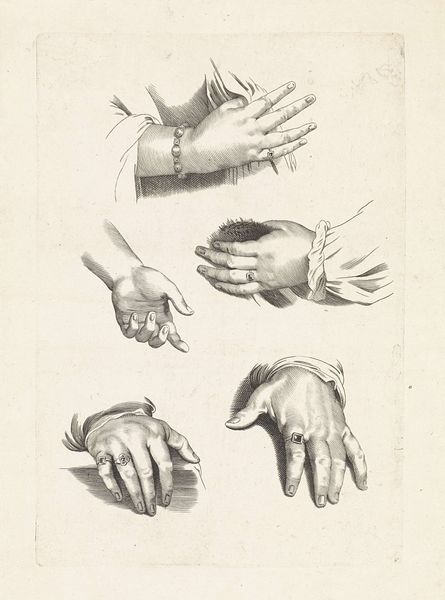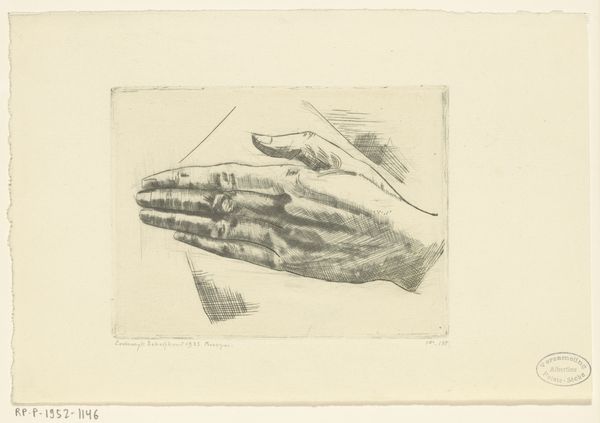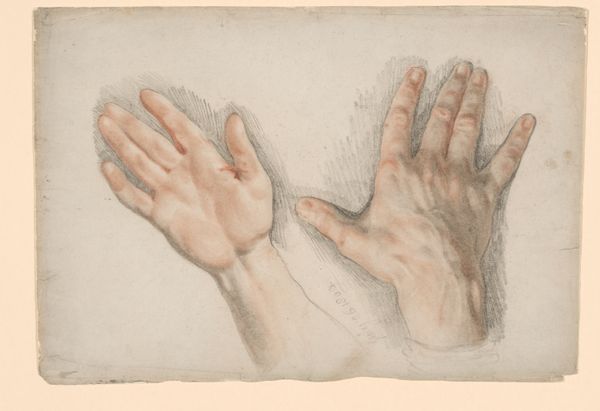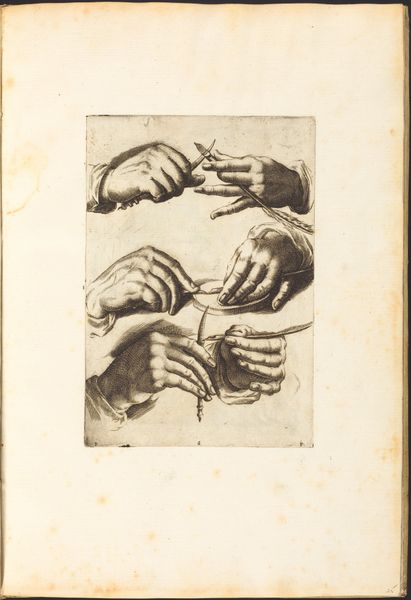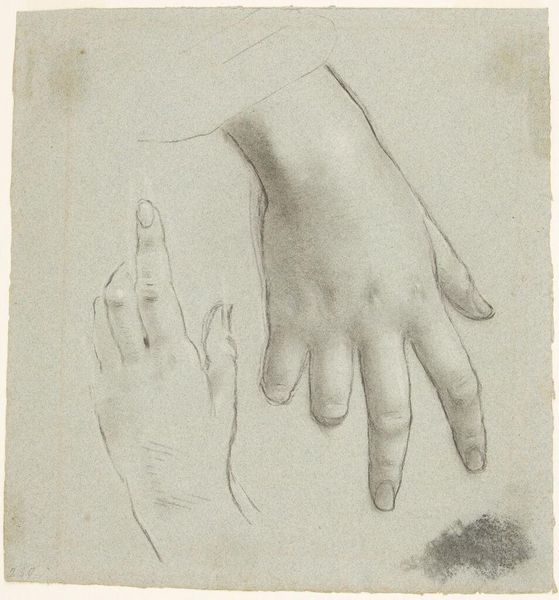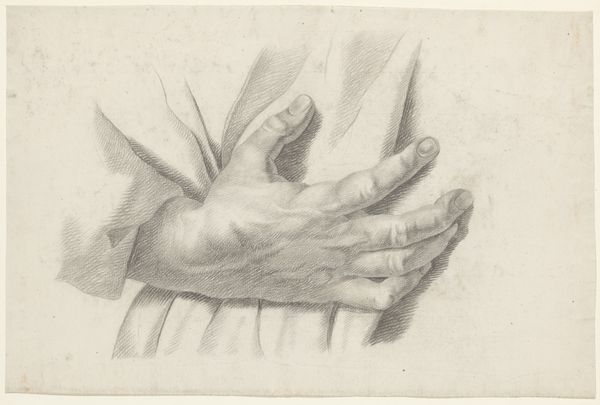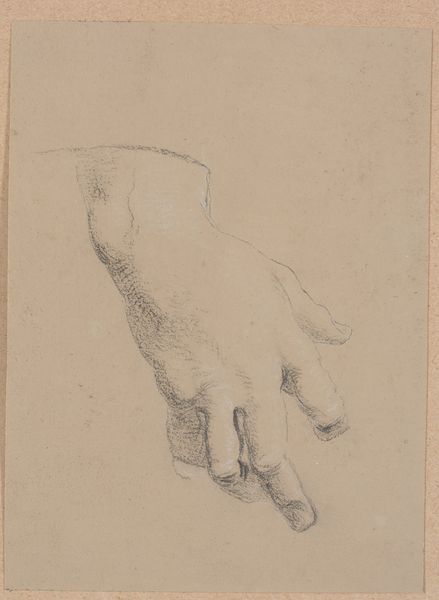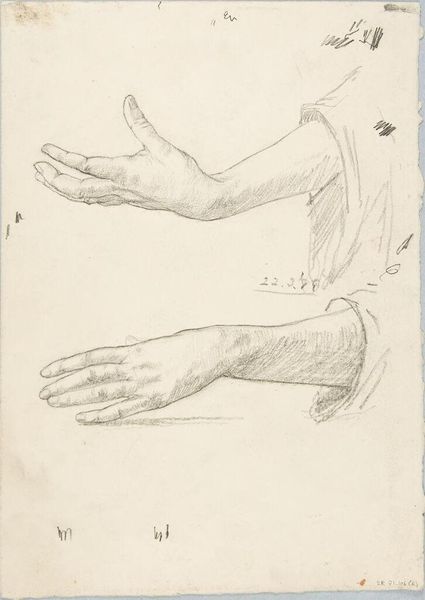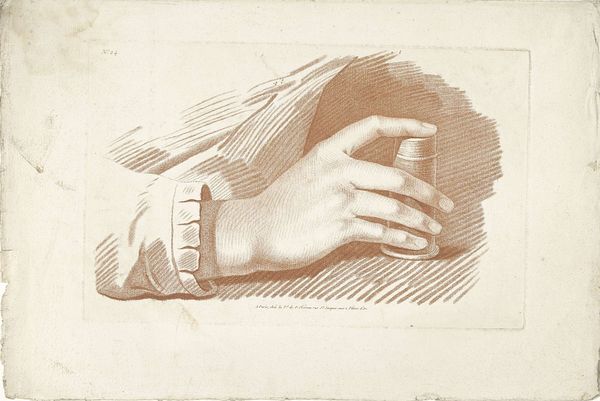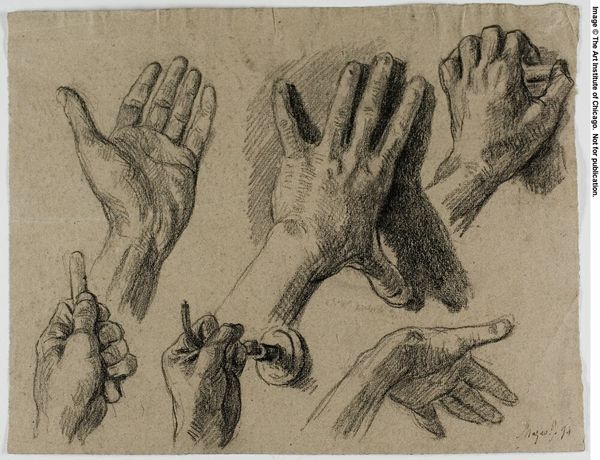
drawing, print, etching
#
portrait
#
pencil drawn
#
drawing
# print
#
etching
#
pencil sketch
#
figuration
#
genre-painting
#
academic-art
#
realism
Dimensions: height 292 mm, width 213 mm
Copyright: Rijks Museum: Open Domain
Curator: The piece before us is titled “Twee handen,” or "Two Hands," by Jean François Janinet, created sometime between 1773 and 1777. It’s an etching and print drawing, currently residing here at the Rijksmuseum. Editor: My initial impression is one of anatomical precision and restrained elegance. The subtle earth tones of the drawing contribute to this impression. Curator: Indeed, Janinet's mastery is evident in the delicate hatching that models the forms. Consider the attention he gives to the articulation of each finger, the tendons, the subtle gradations of tone… a masterful rendering in a purely academic sense. Editor: But the “why” interests me most. Why hands? Hands were historically signifiers of labor. Whose hands are these, and what societal role did they perform? We see them divorced from action. I also find the multiple views… It's a common training method, no? Curator: Precisely. These preparatory sketches were standard practice in academic ateliers of the 18th century, serving as models for aspiring artists learning anatomy and form. The drawing displays academic art principles. Editor: I'm curious if prints like this were meant for public consumption. Who had access to such artistic skill in depicting a laborer’s hands, given their social status at the time? Curator: Likely circulating among artists and collectors, not necessarily the public at large. The accessibility of prints allowed a wider audience to study master's techniques. These drawings were tools of artistic transmission. Editor: So, in effect, while ostensibly a study, the print itself is playing a part in a system of reinforcing artistic hierarchy and instruction, influencing tastes. Curator: It's also vital to think about the shift in art patronage. It shifted from private aristocracy to the larger population through such means as exhibitions and printed editions, so it gave broader visibility. Editor: In considering those historical details, you appreciate that beyond an aesthetic appeal of mere technical merit and how artistic styles are constructed and distributed to the wider community to create our accepted aesthetics. Curator: Yes, indeed. We witness how these details converge into an interesting art piece of history.
Comments
No comments
Be the first to comment and join the conversation on the ultimate creative platform.

